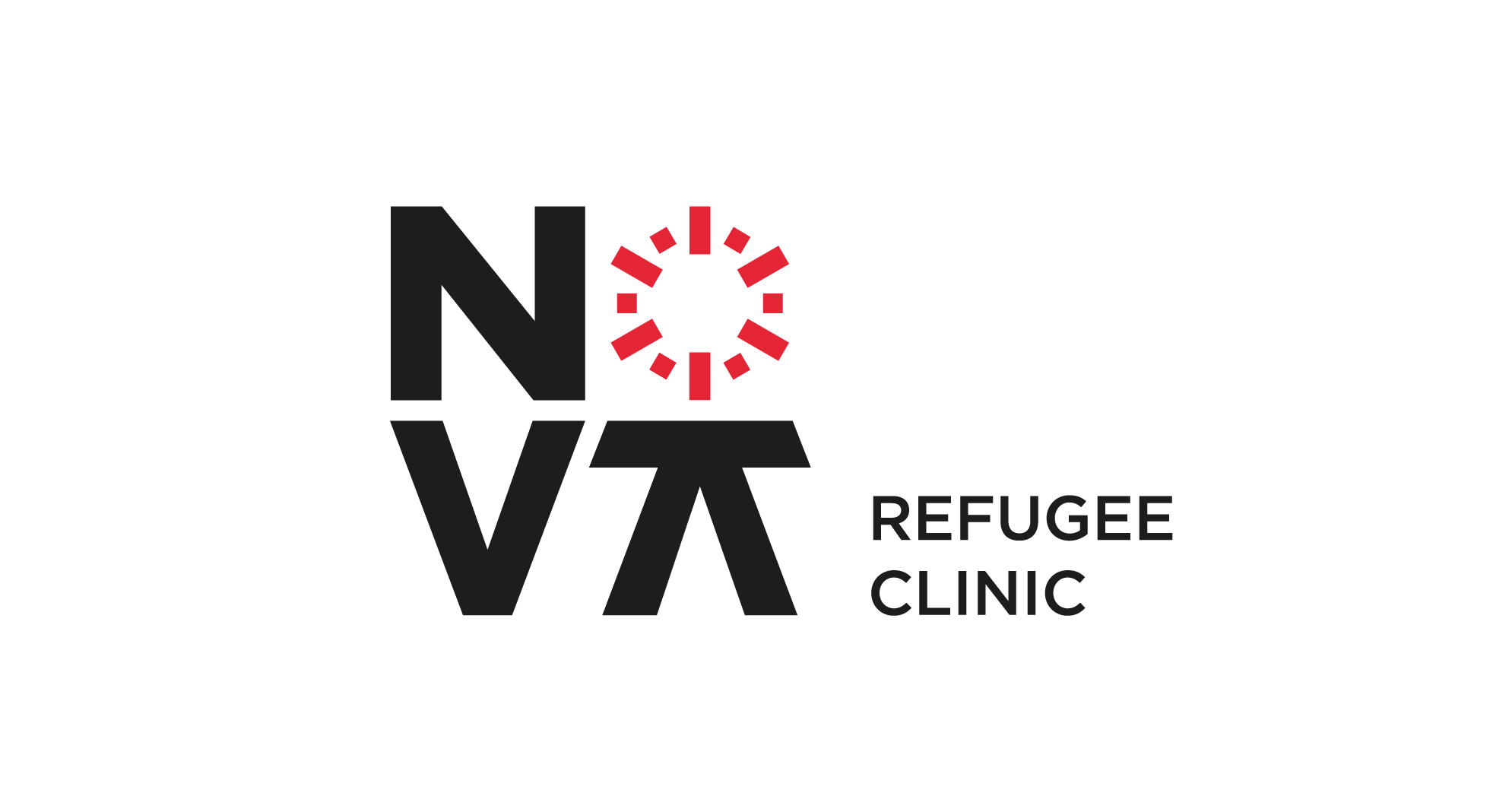UNSC Resolution 2178 (2014) and the Exclusion of Foreign Terrorist Fighters from Refugee Protection
Madalena Simões[i]
Abstract
This blog post addresses the UN response to foreign fighters and their alleged connections with asylum seekers. More specifically, it focuses on UNSC Resolution 2178 (2014), discusses its underlying rationale and analyses how and if foreign terrorist fighters can be excluded from refugee protection. Finally, it explores the legal and practical obstacles of its application and stresses how a broad application of the exclusion clause may target whole fractions of asylum seekers, denying them protection and safety.
Keywords: UNSC Resolution 2178 (2014); Foreign Fighters; Refugees; exclusion clause.
Introduction
Until 2001, the United Nations General Assembly (UNGA) was the primary UN institution working on terrorism. However, in the 9/11 aftermath, the United Nations Security Council (UNSC) took the leading role on this issue. Besides condemning terrorism[ii] and establishing new bodies,[iii] the Council required States to adopt new measures to improve the fight against terrorism, preventing and punishing terrorist activities. In September 2001, UNSC Resolution 1373 explicitly noted the legal obligations of States in the combat against terrorism. As we will explore further below [Under Section B], these obligations[iv] stressed the possibility of terrorists using refugee law to secure international protection and promote their activities. One year later, UNSC Resolution 1390 broadened the temporary smart sanctions against the Taliban leaders in Afghanistan into a permanent and global list of Al-Qaida and Taliban terrorists.[v]
In 2014, the UNSC adopted Resolution 2178 to combat the phenomenon of the so-called “foreign terrorist fighters” or “FTFs.” Resolution 2178 provides a general regulatory framework similar to that of Resolution 1373, defining as FTFs:
[I]ndividuals who travel to a State other than their States of residence or nationality for the purpose of the perpetration, planning, or preparation of, or participation in, terrorist acts or the providing or receiving of terrorist training, including in connection with armed conflict.
Since Resolution 2178 was adopted under Chapter VII of the UN Charter and is therefore legally binding for all UN Member States, it obtains, pursuant to Article 103 of the Charter, primacy over any other international agreement of states.
Although the phenomenon of foreign fighters is not new.[vi] UNSC Resolution 2178 was adopted due to the escalation of the Syrian and Iraqi conflicts, where high numbers of foreign fighters have participated. Most notably, in 2015, it was estimated that over 25,000 foreign terrorist fighters from over 100 countries had travelled to join or fight for terrorist entities associated with Al-Qaida, with the flow primarily arriving at the Syrian Arab Republic and Iraq.[vii]
This blog post will focus on UNSC Resolution 2178, discussing its underlying rationale of a link or nexus between terrorists -including foreign fighters- and refugees and how this may negatively affect asylum seekers and refugees.
UNSC Resolution 2178 (2014)
In the aftermath of 9/11, UNSC called upon States to “take appropriate measures […] before granting refugee status, for the purpose of ensuring that the asylum-seeker has not planned, facilitated or participated in the commission of terrorist acts.”[viii]
In 2014, this position was extended towards foreign fighters. The UNSC Resolution 2178 calls upon States to “ensure, in conformity with international law, in particular international human rights law and international refugee law, that refugee status is not abused by the perpetrators, organisers or facilitators of terrorist acts, including by foreign terrorist fighters,” expressly extending the cause of exclusion of refugee status applicable to terrorists to foreign fighters.
Since then, many EU States’ leaders have expressed their concerns regarding terrorists’ and foreign fighters’ potential infiltration among refugees, especially in the aftermath of the 2015 and 2016 terrorist attacks in Europe. The attacks in Paris, Brussels and other European capitals coincided with the heightened refugee flows due to the escalation of the Syrian conflict, aggravating the xenophobic sentiment of specific fragments of the European public opinion. Similarly, after the 9/11 attacks, security concerns and political pressure contributed to portraying asylum seekers and refugees as potential terrorists in the USA.[ix]
However, international humanitarian organisations manifestly condemned this approach stressing that refugees are themselves fleeing terrorism rather than engage with it.[x] Linking refugees to terrorists and FTFs, disproved of any solid foundation, can undoubtedly lead to unlawful profiling and stigmatisation of asylum seekers, discriminating refugees upon arrival at host countries.
Moreover, the 2016 report of the United Nations Special Rapporteur on counterterrorism and human rights noted that indeed there was “no evidence that migration leads to increased terrorist activity.” It warned further that linking migrant flows to an increased threat of terrorism might produce “restrictive migration policies or violate human rights”.[xi]
Also, in several cases, refugees and asylum seekers have contributed to the prosecution of individuals linked to terrorist activity, assisting law enforcement and criminal justice authorities in the host State.[xii] Recognising their active contribution, EUROJUST has noted that “victims and witnesses arriving as asylum seekers to Europe can offer valuable testimonies.”[xiii]
The exclusion of foreign terrorist fighters from refugee protection
According to Article 1F of the Geneva Convention Relating to the Status of Refugees, the legal basis for exclusion from refugee protection is, among else “(c) the commission of acts contrary to the purposes and principles of the United Nations.” When applicable, this clause excludes the refugee of the granting of refugee status, having as a consequence the denial of any refugee rights.
UNSC Resolution 1377 (2001) falls within the scope of Article 1F (c), although not explicitly mentioned in the text, stating that:
[A]cts of international terrorism are contrary to the purposes and principles of the Charter of the United Nations, and that the financing, planning and preparation of, as well as any other form of support for acts of international terrorism, are similarly contrary to the purposes and principles of the Charter of the United Nations.
By explicitly broadening the scope of the former Resolution to FTFs, UNSC Resolution 2178 (2014) seems to recommend that States exclude them too from refugee protection.[xiv] Nevertheless, the applicability of Article 1F (c) to FTFs can be challenging.
According to UNHCR, there are several obstacles to the proper applicability of Article 1F (c) to FTFs. Bearing in mind the rules of international criminal responsibility, UNHCR warned that only the leaders of the groups responsible for terrorist acts might be in abstract liable to exclusion under this provision.[xv] The fact that an individual may be on a list of terrorist suspects or be a member of an organisation designated as terrorist does not present sufficient evidence to justify exclusion and thus should not suggest an automatic application of the exclusion clauses.[xvi] References to UN General Assembly and Security Councils resolutions of measures for combating terrorism which declare that acts of terrorism or support for acts of terrorism are contrary to the purposes and principles of the UN should not suggest an automatic application of Article 1F (c).[xvii]
Even if there are legal grounds for the applicability of the exclusion clause, there are still practical challenges to such exclusion of refugee protection.
Firstly, the European Union’s experience reveals that States often encounter difficulties to conduct promptly detailed individual assessments due to the lack of resources.[xviii] Mainly during large influxes, these assessments are almost impossible. When assessing the credibility of exclusion-related claims, a higher standard of proof is required than that of being recognised as a refugee.[xix] The exclusion interview shall be conducted by specialised asylum service staff, and the obligation lies with the state to prove the reasons for exclusion. Exclusion assessment cannot always be feasible, bearing the danger of people who might be mere supporters or engaged in day-to-day financial transactions, with non-state armed groups of allegedly terrorist nature (and in this sense, FTFs). Since the reality of war for small communities is much different than what is perceived on a large scale, people who may assist FTFs voluntarily (by assisting, e.g., a relative or a friend) or through coercion might be denied international protection although their life and safety are likely to be in danger.
Furthermore, when the exclusion clause is applied to an individual, the problem of his or her destiny arises. EU States are simultaneously members of the European Convention on Human Rights (ECHR). They are bound by Article Three, which prohibits torture and other inhuman or degrading treatment in a non-derogable manner.[xx] ECtHR has explicitly confirmed this position also concerning terrorist activities, noting that, albeit it understands ‘the immense difficulties faced by States in modern times in protecting their communities from terrorist violence […] even in these circumstances, the Convention prohibits in absolute terms torture or inhuman or degrading treatment or punishment, irrespective of the victims conduct.’[xxi] In this sense, even when a suspected FTF faces the danger of being subjected to torture upon return to his/her country of origin, the principle of non-refoulement prevails, and return is impossible.[xxii] As such, the excluded are left in a state of legal limbo, equal to statelessness, unable to continue their lives, find a vocation, have access to social security, travel, raise a family. The rationale behind this limbo is the condemnation of their actions by the international community. Evidently, the misuse of the exclusion clause can be detrimental to the individual’s life.
In practice, States often simply reject the asylum claim due to credibility reasons and return the applicant to his or her country of origin without immersing into standard-of-proof-related difficulties.[xxiii]
Conclusion
Fighting against the misuse of refugee status is of extreme importance for protecting the integrity of the institution of asylum. Consequently, measures should certainly be taken by States to avoid any usurpation of this legal obligation. Equally, it is of extreme importance that such measures do not ever compromise the objective and impartial evaluation of the applicability of the Article 1F exclusion clauses, which should be an analysis immune to any prejudices and unsubstantiated links between refugees and terrorist and foreign fighters.
Indeed, the UNHCR indicates given the “serious consequences of exclusion” that “the interpretation of the exclusion clauses must be restrictive and applied with the utmost caution, and in the light of the overriding humanitarian character of the 1951 Convention” and recommends that “Article 1F is not to be equated with a simple anti-terrorism provision.”[xxiv]
The fight against terror and management of the foreign fighter
phenomenon is a contemporary issue of extreme importance that States must
attend to. However, policies on this matter should never compromise the
protection of refugees in need.
HOW TO CITE:
M. SIMÕES, UNSC Resolution 2178 (2014) and the Exclusion of Foreign Terrorist Fighters from Refugee Protection, NOVA Refugee Clinic Blog, June 2021, available at <https://novarefugeelegalclinic.novalaw.unl.pt/?blog_post=unsc-resolution-2178-2014-and-the-exclusion-of-foreign-terrorist-fighters-from-refugee-protection>
[i] Undergraduate student at Nova School of Law and fellow researcher at Nova Refugee Clinic.
[ii] Scheinin, M. (2014). Back to post-9/11 panic? Security Council resolution on foreign terrorist fighters.
[iii] UNSC Resolution 1373 (2011) preamble.
[iv] ibid para. 6.
[v] ibid paras. 1, 2 and 3.
[vi] Flores M. (2016) ‘Foreign Fighters Involvement in National and International Wars: A Historical Survey’ In: de Guttry A., Capone F., Paulussen C. (eds) Foreign Fighters under International Law and Beyond. T.M.C. Asser Press, The Hague. https://doi.org/10.1007/978-94-6265-099-2_3; Sebastian Faber, ‘Spain’s Foreign Fighters,’ Foreign Affairs (September/October 2016); de Guttry, A., Capone, F., & Paulussen, C. (s.d.). Foreign Fighters under International Law and Beyond (foreword).
[vii] UN Security Council, Statement by the President of the Security Council (25 de May de 2015).
[viii] UNSC Resolution 1373 (2001).
[ix] de Guttry et al., supra note 6.
[x] Danish Institute for International Studies Report. (5 de 2017). Europe’s Refugee Crisis and the Threat of Terrorism an Extraordinary Threat?
[xi] Ibid.
[xii] CTED Regional Analytical Brief April 2021, Efforts of European Member States to Prevent Terrorists from Abusing Asylum Systems while Ensuring Compliance with International Refugee and Human Rights Law: Challenges, Recommendations and Good Practices.
[xiii] Eurojust, Cumulative Prosecution of Foreign Terrorist Fighters for Core International Crimes and Terrorism-Related Offences, May 2020, p. 25.
[xiv] de Guttry et al., supra note 6.
[xv] UNHCR. (2003). UNHCR: Background note on the application of the exclusion clause: Article 1 F of the 1951 Convention relating to the status of refugees.
[xvi] UNHCR. (2009). UNHCR Statement on Article 1F of the 1951 Convention.
[xvii] UNHCR. (2019). Handbook on Procedures and Criteria for Determining Refugee Status under the 1951 Convention and the 1967 Protocol relating to the Status of Refugees.
[xviii] CTED Brief, supra note 12.
[xix] Summary Conclusions: exclusion from refugee status Expert roundtable organized by the United Nations High Commissioner for Refugees and the Carnegie Endowment for International Peace, hosted by the Luso-American Foundation for Development, Lisbon, Portugal, 3–4 May 2001, p. 6 available at: https://www.refworld.org/pdfid/470a33bad.pdf. Also, Michael Bliss, ‘Serious Reasons for Considering’: Minimum Standards of Procedural Fairness in the Application of the Article 1 F Exclusion Clauses, 12 International Journal of Refugee Law, Special Supplementary Issue 2000, p. 92 (116).
[xx] Council of Europe, European Convention for the Protection of Human Rights and Fundamental Freedoms, as amended by Protocols Nos. 11 and 14, 4 November 1950, ETS 5, available at:
https://www.refworld.org/docid/3ae6b3b04.html. Also, De Weck, F. (27 Sep. 2016). Non-Refoulement under the European Convention on Human Rights and the UN Convention against Torture. Leiden, The Netherlands: Brill | Nijhoff. doi: https://doi.org/10.1163/9789004311497
[xxi] Chahal v. United Kingdom, Judgement of 15 November 1996, Appl. No. 22414/93, Reports of Judgments and Decisions 1996-V, (paras. 79–80). See also, UNHCR Manual on Refugee Protection and the ECHR Part 2.1 – Fact Sheet on Article 3, https://www.unhcr.org/3ead2d262.pdf.
[xxii] Ibid, (para. 80). Soering v. United Kingdom, Judgement of 7 July 1989, Appl. No. 14038/88, Series A, No.161, para. 88.
[xxiii] CTED Brief, supra note 12.
[xxiv] UNHCR Statement on Article 1F of the 1951 Convention (July 2019).


